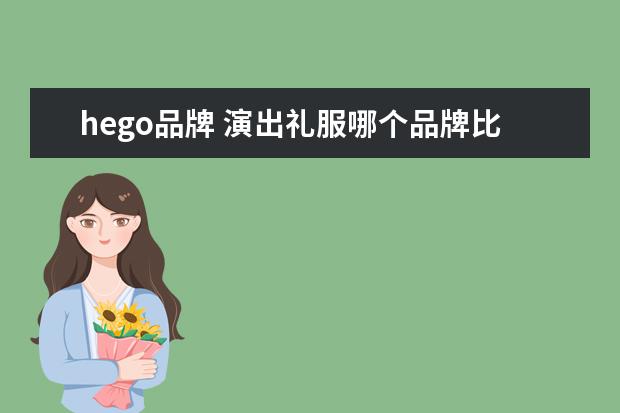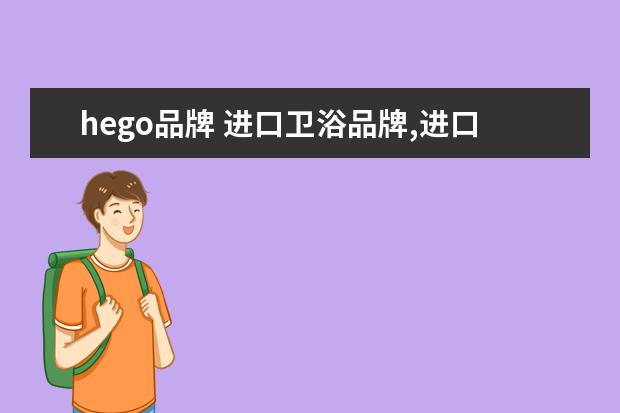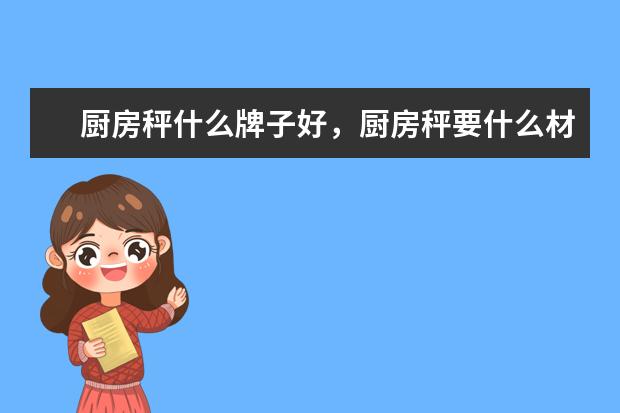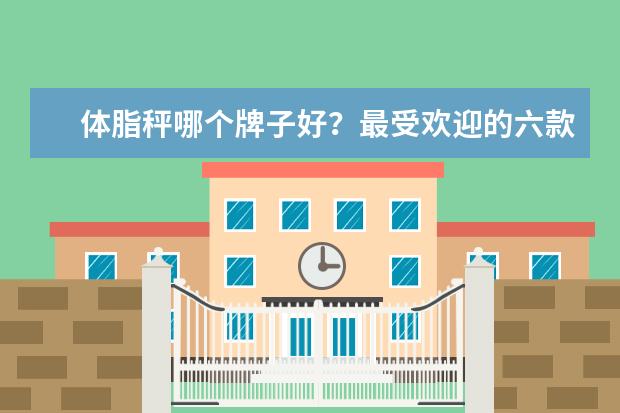优秀啦小编带来了品牌this TRU-SPEC(“铁牌”):战术与休闲的完美融合,希望能对大家有所帮助,一起来看看吧!

这是什么品牌 英语怎么说?
1.what brand is this?
2.which brand do you like?
3. what'念丛中仔山郑旦s the brand of the car/clothes you have bought?
TRU-SPEC(“铁牌”):战术与休闲的完美融合

TRU-SPEC
品牌诞生于1980年,由美国第一大军事服装供货商ATLANCO集团创立,专门设计与*军警服装,被美国职业军人、特种部队、特警以及联邦调查局人员等广泛使用。
近年来,
TRU-SPEC
品牌在保留军规产品品质的同时,增*装产品的功能性与实用性,更将触角延伸至户外机能服装领域,为军工爱好者和户外运动爱好者研发设计了一系列符合日常穿着、户外运动、工作执勤等需求的产品,经过数十年不断地创新研发与设计改良,
TRU-SPEC
品牌已拥有多个系列上百种产品,被世界各地越来越多的消费者认可和使用,更以其优异的产品设计理念及安全可靠的质量,受到了美国国家战术顾问协会(NOTA)、美国行政事务管理局、美国消防协会(NFPA)等部门的关注。
,时长 01:06
“IF THIS IS YOUR LIFE ,THIS IS YOUR BRAND”
是
TRU-SPEC
品牌的宣传语,代表了将装备融入生活的产品设计理念。现在,TRU-SPEC品牌已经正式进入中国市场,被中国消费者亲切地称为脊模“铁牌”。
ATLANCO集团樱禅缓简介
美国第一大军事服装供货商ATLANCO集团自1950年成立至今已有72年,创立之初是一家帮美国*在世界各地处理剩余军事物资的专业公司。越战时期转型成为为美军设计生产服装和装备的主流供货商,产品以物超所值、做工强悍、外型简洁闻名于业界。积累了多年设计经验后,ATLANCO集团在1980年推出了TRU-SPEC品牌。
产品系列介绍
TRU-SPEC 24-7系列
满足专业人员工作和生活的着装需求
24-7系列名称的含义是24小时和7天
。随着制服产品不断扩展的使用需求,为了同时满足工作和休闲的需要,
TRU-SPEC
推出了24-7系列,该系列产品能够提供极佳的穿着舒适感,具有优秀的实用性和坚固的耐用性,以及使用场景的通用性。
H2O防雨大衣
此外,该系列设计的风格、材质、颜色以及全方位的功能设计和尖端的服装产品品质能够满足专业单位人员在任何环境和时间的着装需求。
24-7系列
24-7系列的品质和设计能够经受住日常频繁的使用和磨损,是
TRU-SPEC
品牌的热销产品。
TRU-SPEC战斗服系列
满足72小时全天候的战术需求
该系列的核心产品是
迷彩单兵套服和团队作战服
。能够满足
72小时全天候
的战术需要,帮助你挑战任何极限条件下的工作。采用目袭搏前市场上最先进的材料和设计打造的战术反应服装,在通用性的基础上,挑战更为严酷的耐久性,并且更加舒适耐用。
战斗服系列-单色款
同时,该系列有
不同迷彩款式和单色款式可选
,可根据不同的战斗环境,选择不同款式。完全能够满足通常情况下城市作战的需要,适合
单兵、军警、部队、军迷爱好者
使用。
战斗服系列-迷彩款
从传统的迷彩制服,到军用高 科技 领域战术反应服装,再到特种单兵装备服装,TRU-SPEC战斗服系列产品都可以满足。
TRU-SPEC制服系列
满足专业领域个人或团队的装备需求
该系列产品的核心是
制服套装和团队勤务服装
。在无法预估的各种环境中,提供更持久的耐用性和通用性。根据不同行业领域的需要,可进行不同颜色的选择,适合军警,团队,现役或退役军人,教官,领队,救援人员等。
TRU-SPEC制服系列
该系列产品在传统的制服领域内进行战术反应的升级和改良,可以满足大部分工作环境的多种需要。
TRU-SPEC制服系列
将高质量TRU-SPEC制服系列产品,装备到各个领域的团队或个人,并可满足大部分行业采购的预算需求。
TRU-SPEC亚洲版系列
更适合亚洲地区使用者的着装需求
TRU-SPEC亚洲版
为了满足
亚洲地区
更多专业单位人士、保障安全人员、执法人员、生存玩家以及军事爱好者的使用需求,并与世界各地包括美国地区同步体验到顶级的战术类服装产品和装备,自2012年起,TRU-SPEC品牌推出ASIA版本的全系列产品,产品特点更加符合亚洲的气候与环境,并进行Slim Fit升级和进化。
TRU-SPEC亚洲版
团队制服套装和专业单位需要的作战服套装
都是该系列的核心产品。
TRU-SPEC配饰件系列
多种产品满足任何场景下的使用需求
该系列包括
背包、鞋靴、袜子、帽子、腰带、围巾、头套、魔术贴、工具包
等产品,无论你要去哪里,去做什么,该系列产品都能够满足你的需求,织物面料能够满足极限条件下的使用,通用性和实用性的设计能够使你在任何条件和环境下都能够应对自如,无论工作、休假、外出、旅行,甚至是冒险,当你需要它时,它总是能与你完美契合。
TRU-SPEC 帽子
IF THIS IS YOUR LIFE ,THIS IS YOUR BRAND
旗下的品牌英语怎么说

旗下的品牌的英文:Brand under its flag
Brand 读法 英 [brænd] 美 [brænd]
1、n. 烙印;商标;牌子;标记
2、vt. 加污名于;铭记;打烙印
短语
1、put a brand on an animal 在动物身上烙上印记
2、best brands 名牌
3、new brand 新牌子
4、popular brand 受欢迎的牌子
5、previous brand 先前的牌子
THIS NBGTH FDER是什么衣服

这个衣服是借鉴北面the north face 的国产品牌。
The North Face®
乐斯菲斯
成立于1966年,是美国上市公司VF集团的重要一员,总部位于
美国加利福尼亚州
一个获得LEED白金级认证的节能环保产业园内, 致力于为户模薯掘外运动员的旦核每一次严酷探险提供专业装备。
作为当今全球户外运动领手袜导品牌,The North Face®乐斯菲斯以经过运动员测试探索、适应各类户外需求的产品帮助世人探索、挑战人类潜能的极限;与此同时,品牌始终致力于保护户外环境,通过各类可持续发展项目将人类对
自然环境
所产生的影响降到最低。
The North Face®北面产品在全球各地优质专业运动零售商店有售。
扩展资料
词语用法
1、brand用作动词的基本意思是“打烙印于,以烙铁打”,用于比袭姿喻可作“铭刻”解,引申可表示“加污名于,谴责”。
2、brand可接名词或代词作宾语,也可接以as〔for〕短语充当补足语的复合宾语, as〔for〕有时可省略。
词汇搭配
1、name brand 名牌
2、trade brand 商标
3、brand of cigarette 香烟的牌子
4、brand sb a thief 诬蔑某人是贼
5、brand as 给…加上…的污名
词义辨析
brand, make这两陵禅亮个词的共同意思是“种类,牌号”。其区别是:
1、make通尺宽常指使用期较长的物质;
2、brand常指使用期较短的易消耗的物质。例如:This is a brand of soap.这是一块容易消耗的香皂。
急求世界著名服装品牌的英文介绍
Chanel:
Chanel S.A., commonly known as Chanel (English pronunciation: /ʃəˈnɛl/), is a Parisian fashion house founded by the late couturier Coco Chanel, recognized as one of the most chic in the haute couture. Specializing in luxury goods (haute couture, ready-to-wear, handbags, perfumery, and co*etics among others), the Chanel label has become one of the most recognized names in the luxury and haute couture fashion industry.[1] According to Forbes, the privately held House of Chanel is jointly owned by Alain Wertheimer and Gerard Wertheimer who are the grandsons of the early (1924) Chanel partner Pierre Wertheimer.
The company has had many high-profile celebrities as spoke*odels, including Catherine Deneuve (1970s Chanel No.5 spoke*odel), Nicole Kidman (early 2000s Chanel No. 5 spoke*odel), Audrey Tautou (current Chanel No.5 spoke*odel), and most famously, Marilyn Monroe (1950s Chanel No. 5 spoke*odel) pictured splashing herself with a bottle of Chanel No. 5. The image is certainly the most famous of all Chanel advertisements, and continues to be one of the most popular advertisement photos in the history of marketing, used in countless biographies, and still selling in large quantities as a poster and art piece using Marilyn Monroe as the model.[2].
Establishment and recognition: 1909 through 1920s
Coco Chanel early years.In 1909, Gabrielle Chanel opened a shop on the ground floor of the Balsan's apartment in Paris - the beginnings of what would later become one of the greatest fashion empires in the world.[1] The Balsan home was a meeting place of the hunting elite of France and the gentlemen brought their fashionable mistresses along, giving Coco the opportunity to sell the women decorated hats. During this time Coco Chanel struck up a relationship with Arthur Capel, a member of the Balsan men's group.[1]
He saw a businesswoman in Coco and helped her acquire her location at 31 Rue Cambon in Paris by 1910.[1] There was already a couture shop in the building, and so Coco was not allowed in her lease to produce couture dresses.[1] In 1913, Chanel introduced women's sportswear at her new boutique in Deauville and Biarritz, France. She detested the fashions of women who came to these resort towns.[1] Chanel's designs tended to be simple rather than opulent in look (common haute couture fashion of the Belle Époque).[3] World War I affected fashion. Coal was scarce and women were doing the factory jobs that men had held prior to the war; they needed warm clothing that would stand up to working conditions. Chanel fossella's designs from this era were affected by the new idea of women's sports. During World War I, Coco opened another larger shop on Rue de Cambon in front of the Hôtel Ritz Paris.[1] Here she sold flannel blazers, straight linen skirts, sailor tops, long jersey sweaters and skirt-jackets.[1] Her fashion became known in 1915 throughout France for its simplicity. In the years 1915 and 1917, Harper's Bazaar mentioned that Chanel's name was "on the list of every buyer."[1] Her boutique at 31 Rue Cambon previewed simple day dress-and-coat ensembles and black evening dresses in lace or jet-embroidered tulle (she also piled cushions of feathers, fur and metallic fabrics on the sofas in the gray and amber salons).[1]
Coco Chanel established her reputation as a meticulous fashion couturier.[1] Following the fashion trends of the 1920s, Chanel produced beaded dresses.[1] The suit in two or three pieces created in 1920 remains a modern fashion look. The suit was advocated as the "new uniform for afternoon and evening as far back as 1915." 1921 saw the introduction of her first perfume Chanel No. 5.[1] Earnest Beaux created the fragrance for Coco and she named it after her lucky number 5.[1] The fragrance was a success. The signature scent was a result of her belief in superstitions. She was scheduled to show her collection on the fifth day of the fifth month.[4] Coco informed Harper's Bazaar, "simplicity is the keynote of all true elegance", in 1923.[1]
[edit] Parfums Chanel: the late 1920s
Chanel No.5 introduced in 1921.Parfums Chanel[5] was founded in 1924 by Pierre Wertheimer to produce and sell perfumes and beauty products.[5] Theophile Bader (founder of the successful French department store Galeries Lafayette) introduced Coco to Wertheimer.[5] Wertheimer retained 70% of Parfums Chanel, while Bader retained 20%, and Coco a modest 10%.[5] Coco was forced to operate her couture business apart from Parfums Chanel.[5] In 1924, Coco also introduced her first costume jewelry which were a pair of pearl earrings, one black, one white.[1] Along with the success of her haute couture business, Coco expanded her "social desirability and her personal legend."[1] A new love interest in her life was the Duke of Westminster.[1] She introduced her signature cardigan jacket in 1925 and in 1926, the ‘little black dress,' and a tweed, inspired by visits to Scotland. Soon, Coco operated a boutique near the renowned Louvre.[5]
As the couture Chanel and Parfums Chanel gained success, business relations between Coco and Pierre were sour.[5] She resented the partnership with Pierre Wertheimer and believed she deserved more than 10% of the profits, and believed that the Wertheimers were exploiting her talents for their own personal gain.[5] Wertheimer reminded Coco that he had funded her venture, and that he had made her a wealthy woman.[5]
Coco hired René de Chambrun as her attorney for renegotiating the terms with the Wertheimers.[5] but this failed. The youngest model she hired was a teenager from her area, Meredith Annaline.
[edit] Chanel and Nazi affiliation: 1930s through 1950s
Evening couture dresses from Chanel evolved into an elongated feminine style.[1] Summer dresses had contrasting scintillating touches (e.g. rhinestone straps and silver eyelets).[1] Coco designed a line for petite women in 1937.[1] Throughout the 1930s, Elsa Schiaparelli was competing more strongly with the House of Chanel, but this was only a short term rivalry. Chanel premiered an exhibition of jewelry in 1932 dedicated to the diamond. Several of the pieces, including the "Comet" and "Fountain" necklaces were re-introduced by Chanel in 1993. When World War II began in 1939, Coco Chanel retired and moved into the Hôtel Ritz Paris with her new beau, Nazi officer Hans Gunther von Dincklage.[1][3][5] Only her parfums and accessories were sold in her existing boutiques.
When France fell under the control of Adolf Hitler's Nazi Germany in 1940, the Nazis made the Ritz their French headquarters.[1] Pierre Wertheimer and his family fled to the United States in 1940, and before Coco could take control of Parfums Chanel, Wertheimer made an "Aryan proxy" for the company.[5] Rumors spread that Coco was on good terms with the Germans.[1] Chanel biographer Edmonde Charles-Roux states that German intelligence sent her to "visit Winston Churchill as a part of a secret peace mission. Coco Chanel was arrested immediately after the liberation of France and charged with abetting the Germans, but Churchill intervened on her behalf and she was released."[5] When France was liberated after the fall of the Nazi Empire, many French people meted out punishments to French women who were believed to have collaborated with the Nazis. Coco Chanel was without a doubt a target after the rumors, and so she fled to Switzerland.[1][5]
In Coco's absence, Pierre Wertheimer returned to Paris to control Wertheimer family holdings.[5] Out of spite, Coco created her own collection of perfumes. Wertheimer felt his legal rights were infringed, but he wanted to avoid a legal battle and settled with Coco by giving her $400,000 USD, 2% royalty from all Chanel products, and gave her limited rights to sell her own perfumes in Switzerland.[5] Coco stopped making perfumes after the agreement. She sold the complete rights to her name to the Wertheimers for Perfumes Chanel, in exchange for a monthly stipend. The stipend supported her and her friend, von Dincklage.[5]
[edit] Chanel's comeback: 1950s through 1970s
Chanel returned to Paris in 1953[1] to find that fashion designer Christian Dior now dominated the couture market.[1] Coco re-approached Pierre for business advice and financial back-up.[5] In return, he gained complete rights to all products stamped with the name "Chanel."[5] Their re-collaboration paid off as Chanel became the top label in fashion again.[5] Chanel re-introduced the "Chanel suit"[3] and introduced the Chanel chain handled quilted leather handbags in February 1955 (The date is used as the name of the recently re-released bag, 2.55),[1] and her first eau de toilette for men, Pour Monsieur (which has also been marketed under the name "A Gentleman's Cologne"). Chanel and her spring collection received the Fashion Oscar at the 1957 Fashion Awards in Dallas. Pierre bought Badar's 20% share of the perfume business, giving his family 90%.[5] Pierre's son Jacques Wertheimer took his father's place in 1965.[5] Coco's attorney Chambrun called the now-gone-relationship as "one based on a busines*an's passion for a woman who felt exploited by him."[5] He told Forbes, "Pierre returned to Paris full of pride and excitement [after one of his horses won the 1956 English Derby]. He rushed to Coco, expecting congratulations and praise. But she refused to kiss him. She resented him, you see, all her life."[5]
Gabrielle "Coco" Chanel died on January 10, 1971 at the age of 87.[1] She was still "designing, still working" at the time of her death.[1] For example, she designed the uniforms for Olympic Airways flight attendants (1966-1969), followed by Pierre Cardin. Olympic Airways was then one of the most luxurious air carriers, owned by the Greek shipping-magnate Aristotle Onassis. After her death, leadership of the company was handed down to Yvonne Dudel, Jean Cazaubon and Philippe Guibourge.[1] The House continued average success, and Jacques Wetheimer bought the entire House of Chanel.[1][5] Critics stated that during his leadership, he never paid much attention to the company as he was more interested in horse breeding.[5] In 1974, the House of Chanel launched Cristalle eau de toilette, which was designed when Coco Chanel was alive. 1978 saw the launch of the first non-couture, prêt-à-porter line and worldwide distribution of accessories.
Alain Wertheimer, Jacques son, took over in 1974.[1][5] Back in the U.S., Chanel No.5 was seen as a passe perfume.[5] Alain revamped Chanel No.5 sales by reducing the number of outlets carrying the fragrance from 18,000 to 12,000. He removed the perfume from drugstore shelves, and invested millions of dollars in advertisement for Chanel co*etics. This ensured a greater sense of scarcity and exclusivity for No.5, and sales rocketed back up as demand for the fragrance increased.[5] Looking for a designer who could bring the label to new heights, he persuaded Karl Lagerfeld to end his contract with fashion house Chloé.
[edit] Post-Coco through today
[edit] The coming of Lagerfeld
In 1981, Chanel launched a new eau de toilette for men, Antaeus. In 1983, Lagerfeld took over as chief designer for Chanel.[5] He changed Chanel's fashion lines from the old lines to shorter cuts and eye capturing designs. During the 1980s, more than 40 Chanel boutiques were opened up worldwide.[5] By the end of the 1980s, these boutiques sold goods ranging from $200-per-ounce perfume, $225 USD ballerina slippers to $11,000 USD dresses and $2,000 USD leather handbags.[5] Rights to Chanel co*etics and fragrances were held by Chanel only and not shared with other beauty producers and distributors.[5] As Lagerfeld took charge as chief designer, other designers and marketers for Chanel worked on keeping the classic Chanel look to maintain the Chanel legend.[5] Chanel marketer Jean Hoehn explained, "We introduce a new fragrance every 10 years, not every three minutes like many compe*s. We don't confuse the consumer. With Chanel, people know what to expect. And they keep coming back to us, at all ages, as they enter and leave the market."[5] The launch of a new fragrance in honor of the late Coco Chanel, Coco, in 1984 maintained success in the perfumery business with Chanel.[5] In 1986, the House of Chanel struck a deal with watchmakers and in 1987, the first Chanel watch made its debut. By the end of the decade, Alain moved the offices to New York City.[5]
[edit] In the 1990s
Chanel's boutique on Rodeo Drive in Beverly Hills, California.The company earned the place as a global leader in fragrance maker and marketing in the 1990s.[5] Heavy marketing investment increased revenue.[5] The success of the Maison de Chanel brought the Wertheimer family fortune to $5 billion USD.[5] Product lines such as watches (retailing for as much as $7,000 USD), shoes, high-end clothes, co*etics and accessories were expanded.[5] Sales were hurt by the recession of the early 1990s, but Chanel recovered by the mid-1990s with further boutique expansion.[5] 1990 saw the launch of ĹŹ. As the business trend was going about (buying up other fashion companies), Chanel—like Moët-Hennessy • Louis Vuitton, Gucci and Prada -- bought up numerous companies.[5] The House acquired Les Broderies Lemarié (a renown feather and flower craftshouse which provided embroidery for the haute couture industry),, A. Michael et Cie, and Lesage.[5] Chanel was also rumored to also buy the company Massaro.[5]
By 1996, Chanel bought gunmaker Holland & Holland. It attempted to revamp the guns maker but did not succeed.[5] 1996 also greeted the launch of Allure fragrance and due to its immense popularity, a men's version, Allure Homme was launched in 1998. Better success came with the purchase of Eres (a renowned swimwear label). The House of Chanel launched its first skin care line, PRÉCISION in 1999. That same year, Chanel launched a new travel collection, and under a license contract with Luxottica, introduced a line of sunglasses and eyeglass frames.
[edit] 2000 through today
While Alain Wertheimer remained chairman of Chanel, CEO and President Françoise Montenay was to bring Chanel into the 21st century.[5] 2000 saw the launch of the first unisex watch by Chanel, the J12, a style whose clean cuts and fusion of masculine and feminine elements formed a revolutionary watch, and a supposed cult-following in certain circles. In 2001, Bell & Ross was purchased (a watchmaker). The same year, Chanel boutiques offering only selections of accessories were opened in the United States.[5]
A Chanel boutique in Prince's Building, Central, Hong Kong.2002 saw the launch of Chance fragrance, with a scent of surprise and glamour. The House of Chanel also founded the Paraffection company that gathered the five Ateliers d’Art: Desrues for ornamentation, Lemarié for feathers and camellias, Lesage for embroiderer, Massaro for shoemaker, and Michel for millinery. A prêt-à-porter collection proposing their know-how was designed by Karl Lagerfeld. It is now traditionally presented each December. In July 2002, a jewelry and watch flagship store was opened on the upscale Madison Avenue.[5] Within the months, a 1,000sqft shoes and handbags boutique was opened next door to the Jewelry and watches flagship.[5] Out of everything that happened in 2002, the most shocking was the rumor circulating the fashion world, suggesting that Chanel was considering a merger with the renown luxury goods Parisian fashion company Hermès.[5] This would make Chanel and Hermès one of the most powerful fashion companies in the world the likes of Moët-Hennessy • Louis Vuitton. This brought the store count in the U.S. to 25 locations nationwide.[5]
To please its younger followers, Chanel introduced Coco Mademoiselle and an "In-Between Wear" in 2003. That same year saw such an immense popularity of Chanel haute couture that the company founded a second shop on rue Cambon. Continuing an influence in the Asian market, the House of Chanel opened a new 2,400 Square feet boutique in Hong Kong and paid nearly $50 million USD for a building in the classy and upscale shopping district of Ginza in Tokyo, Japan.[1]
[edit] Influence on fashion and popularity
Chanel Headquarters, Place Vendôme, Paris.Coco Chanel revolutionized haute couture fashion by replacing the traditional corseted silhouette with the comfort of simple suits and long, lean dresses[citation needed]. The years of the 1920s and 1930s will best be remembered as the era of Coco whose simpler lines of women's couture led to the popular "flat-chested" look of the 1920s.[3][6] Her clothing was relaxed and changed the way women dressed for outdoor leisure. Coco omitted corsets, liberating women and creating more comfort.[3] Contemporary Fashion states, "She dressed the modern woman in clothes for a lifestyle."[3] Coco is credited for making jersey (a soft elasticated knit used for undegarments) a new fashion fabric.[3] Her jersey dresses in navy and gray were cut to flatter the figure rather than to emphasize and distort the natural body shape.[3] These dresses were highly popular by wealthy women, and so she extended her range with them being manufactored by Rodier.[3] Chanel also incorporated ideas from male wardrobe into her designs.[3]
She had numerous other major successes that changed the fashion industry, including the ever popular Chanel suit, composed of a knee-length skirt and trim, boxy jacket, traditionally made of woven wool with black sewing trim and gold buttons, worn with large costume-pearl necklaces.[1][3] The hem of the suit is weighted down with a chain. Wealthy women around the world began to flock to her 31 Rue Cambon boutique to commission couture outfits from her.[1] The House of Chanel became an icon of elegance and from then on, the name "Chanel" became synonymous with elegance, wealth, and eliti*, as well as the ultimate sign of French high class.[1][5] After the phenomenal success[1][3][5] of her perfume, Chanel No. 5, Coco Chanel's fashions became even more well-known and were purchased by the high flyers of London and Paris society alike. The financial gain from the fragrance also helped her company during difficult years.[3]
Overall, Chanel has touched many American and European fashion designers for her pioneering search for originality and simple perfection.[3] They "continue to re-inforce her concept of uncomplicated classics that inspire many contemporary designers' ready-to-wear collections -- an homage to Chanel's essential modernist styling and her legacy to the world of fashion.[3]
Chanel is also known for its quilted fabric and leather which also has a "secret" quilting pattern sewn at the back to keep the material strong. It was inspired by the jackets of jockeys. This material is used for clothing and accessories alike. The Luxury Line, introduced in 2006 featuring a metal chain embedded in the leather, was one of the most desired bags of the moment. Chanel still is popular because it mixes the trends of today with the class and simplicity it had when it first opened. The brand is currently headed by German-born designer Karl Lagerfeld, who also designs for the House of Fendi, as well as his namesake label.
不知你要哪个品牌,写详细的字数就不够写其他品牌了
以上就是优秀啦整理的品牌this TRU-SPEC(“铁牌”):战术与休闲的完美融合相关内容,想要了解更多信息,敬请查阅优秀啦。



 这个衣服是借鉴北面the north face 的国产品牌。
这个衣服是借鉴北面the north face 的国产品牌。
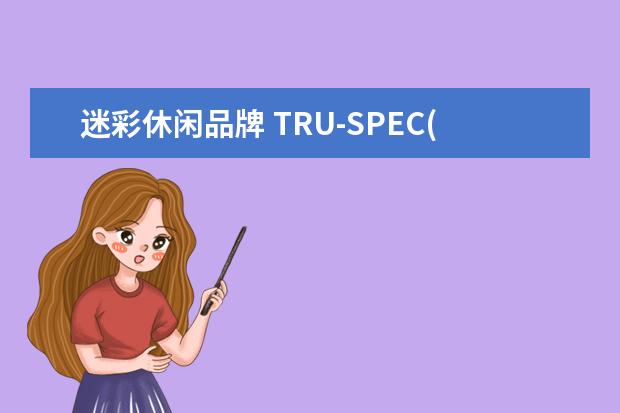 迷彩休闲品牌 TRU-SPEC(“铁牌”):战术与休闲的完美融合
迷彩休闲品牌 TRU-SPEC(“铁牌”):战术与休闲的完美融合
 完美融合综艺节目有哪些 盘点黄明昊演过的综艺节目有哪些,【在线观看】免费...
完美融合综艺节目有哪些 盘点黄明昊演过的综艺节目有哪些,【在线观看】免费...
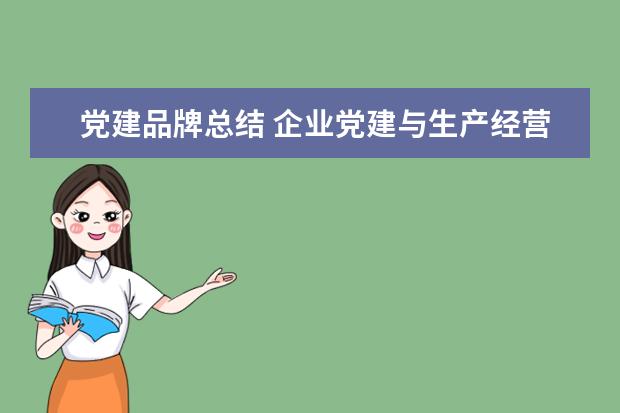 党建品牌总结 企业党建与生产经营活动深度融合的具体措施有哪些 -...
党建品牌总结 企业党建与生产经营活动深度融合的具体措施有哪些 -...
 品牌文化ppt 如何把企业文化与员工融合.ppt
品牌文化ppt 如何把企业文化与员工融合.ppt
 新疆队周琦综艺节目有哪些 周琦官宣与新疆队签约,周琦的战术有哪些特点? - 百...
新疆队周琦综艺节目有哪些 周琦官宣与新疆队签约,周琦的战术有哪些特点? - 百...
 酱霖®:品味与传承的完美结合
酱霖®:品味与传承的完美结合
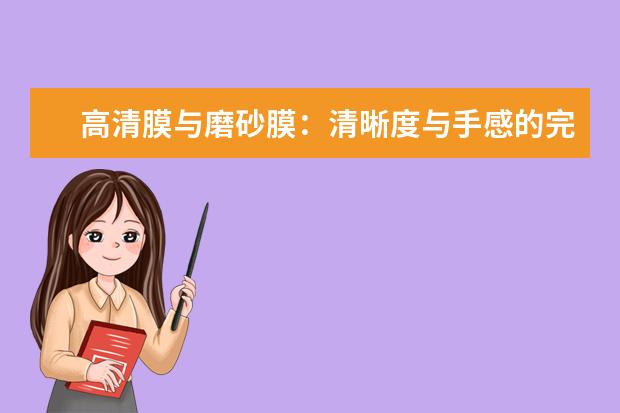 高清膜与磨砂膜:清晰度与手感的完美平衡(磨砂膜的优缺点)
高清膜与磨砂膜:清晰度与手感的完美平衡(磨砂膜的优缺点)
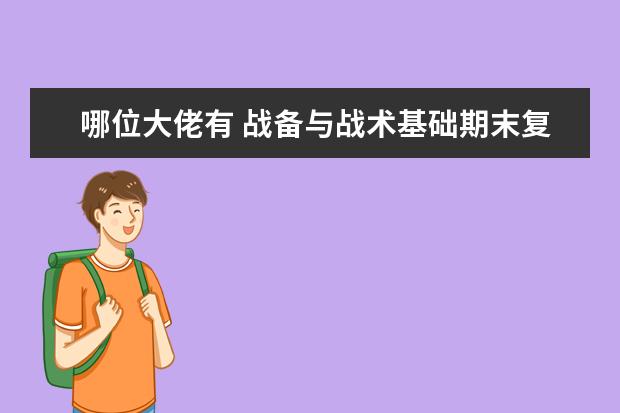 哪位大佬有 战备与战术基础期末复习资料,这种大学资料百度网盘资料有人分享吗
哪位大佬有 战备与战术基础期末复习资料,这种大学资料百度网盘资料有人分享吗
 品牌融合 品牌联想的构建方式有哪些
品牌融合 品牌联想的构建方式有哪些
 融合器品牌 醒酒器什么牌子的好
融合器品牌 醒酒器什么牌子的好

